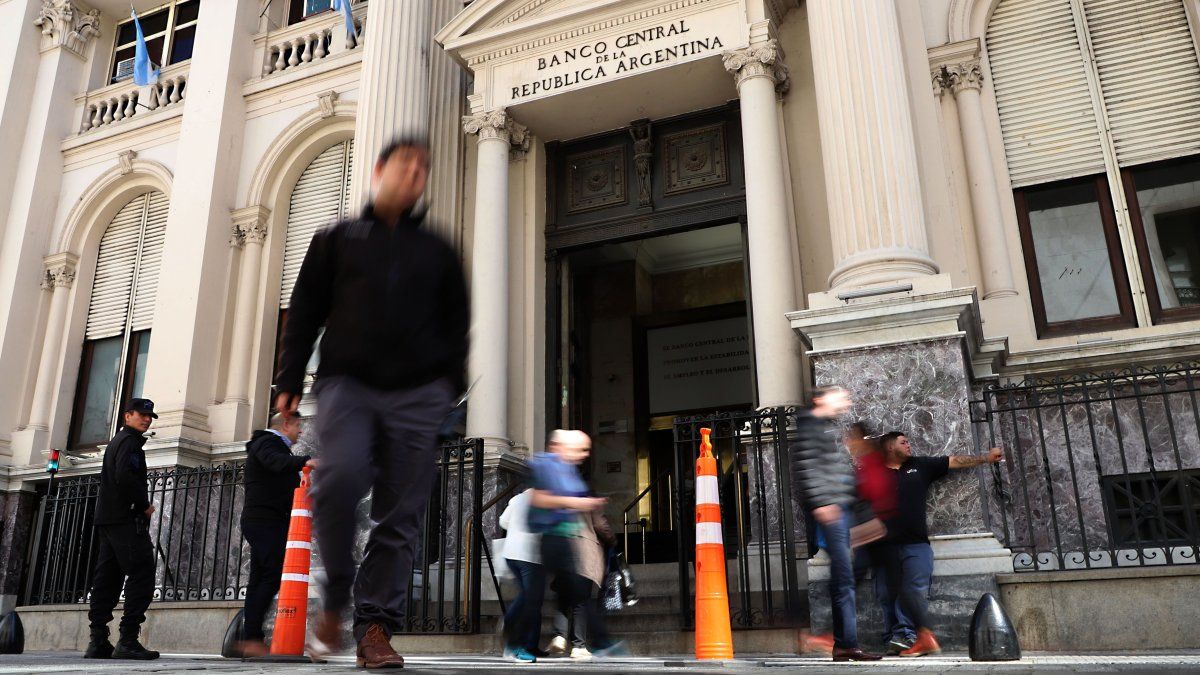markets finance stocks investments live bonds stocks
The country risk is falling and the objective is to break through 400 points in the medium term.
Depositphotos
There is still a way to go to reach 400 points. Although there was a “feign” in the last few hours that it was approaching that target given that a data published by Reuters placed that index around 450 units, an official came out to put a cold shoulder to the matter. Felipe Núñez, head of Finance of the Ministry of Economy, said through the social network a technical mismatch, which occurs at a time of strong volatility in Argentine bonds due to the imminent coupon payment that will be made this Thursday. What happened was that the index only takes the evolution of the global ones in dollars, it does not include the bonars. Therefore, faced with a sharp jump in the titles it takes, it fell resoundingly, but JP Morgan later corrected the error and adjusted it by 561 points.
The fundamentals of the decrease in Argentine country risk
However, although what happened this Tuesday was an exaggeration, for the moment, The Argentine country risk is on the downside. “The reality is that it is around 570 points. The compression continued at the beginning of 2025,” describes Pedro Siaba Serrate, Head of Research & Strategy at Portfolio Personal Inversiones (PPI). The path is positive in the eyes of investors and the analyst maintains that this “responds, in part, to the coupon reinvestment hypothesis“.
Explains that it must be taken into account that The holders of the securities that pay this January 9, are going to make about US$4,250 million, of which 52.5% will go into the hands of residents and it is expected that these funds will be reinvested in securities of the curve. While, although in the case of non-residents this is less likely to be the case, given that the different comparable credit “spreads” remain low, he anticipates that “they can maintain the interest and a good part of these flows will be reinvested “. How these funds behave will be key to the future dynamics of bonds.
Juan Ignacio Alra, Portfolio Manager of Consultatio/TPCGsays to Scope that the Government had a good year in financial matters. “It eliminated the fiscal deficit, calmed the exchange gap, strongly reduced inflation and the political and social costs were, contrary to what was believed, low. In short, it ended last year with better indicators than those with which it began,” he details. . Thus, he explains that these are some of the elements that allow it, today, to sustain this improvement in the global financial rating. However, the big question is whether it will be sustained.
Will the country continue to have low risk?: what does the market predict?
For Siaba Serrate, This trend will continue and the country risk will decrease furthergiven that in some way to the macro elements, such as fiscal reorganization, and that this course can be repeated, added to a potential agreement with the International Monetary Fund (IMF) and an incipient return to the international debt market, which arises with the REPO that the Government obtained. However, it clarifies that the holder of Argentine bonds will not have returns this year as extraordinary as those shown in 2024.
Santiago López Alfaro, Securities Patentalso predicts that Argentina will continue on this path helped by local bonds, but also by a recovery in the Federal Reserve rate and The local risk can reach levels that he defines as “the worst in Latin America, which is a level of 400 points, like Honduras has, for example.” That would allow Argentina to access a rate of 8%, he estimates.
Along the same lines, Bastante explains that “The outlook for the local market is generally favorable.: the macro data on the fiscal result and deceleration of inflation are positive and well received by the markets.” To which Gastón Lentini, financial analyst, points out that “the mood of investors is high and the data on the fiscal surplus, added to the retail sales reported by the Argentine Chamber of Medium Enterprises (CAME) lead to hope that the collection of coupons and capital of the Bonares (AL) and Globales (GD) bonds will happen without risks.” The issue is to see what happens in the future.
Downside country risk: what doubts lie ahead
Looking to the future, Bastante points out that There is room for the country’s risk to continue lowering and most analysts agree on that.. “In fact, other countries in the region have between 200 and 300 basis points, while Argentina, which started at 1,900 basis points when the current government took office, is now around 600 points,” he details. However, he adds that, Being an election year, there can always be “noises”but that, “if the Government does well in the mid-term elections, and as long as it maintains fiscal discipline, a country risk of between 200 and 300 points would be fully achievable.”
On that same train, Lentini anticipates that the forecasts, if this dynamic continues, speak of a country risk of less than 500 pointswhich means that we can still see greater increases in the prices of these bonds, which “sounds exciting”, although he points out that we must be objective and recognize that “We still have negative net reserves in the Central Bank (BCRA)“Consequently, he warns that, although the idea that Argentina normalizes, pays and accesses new credits is reopened, he does not dare “to completely trust that all the country’s problems have been solved.”
It happens that, although the financial front smiles on Javier Milei, Bastante warns that one of the challenges of this year “is to see if the good climate in the markets can be translated into an improvement in the real economy and if the investments from the Large Investment Incentive Regime (RIGI)”. Likewise, it is worth remembering that, During the Government of Mauricio Macri, the index reached around 300 points, but then the large funds began to withdraw, the lifting of the stocks fell and the fundamentals that had led to the decline in a short time were diluted.
As Lentini says: “In Creole, We can see that we are on the right path in the eyes of global investors, but we need to continue here so that the country risk continues to decline and the disarmament of the stocks can continue.“. He explains in this sense something that we Argentines have learned by force, that there is no magic solution, in a single day by pressing a button. “It requires unblocking different restrictions and that will really allow us to have income from foreign direct investment again. , freedom in the flow of capital and the most difficult thing is to continue generating trust,” he says.
Thus, it is observed that, although the market sees positive signs and wants to believe, it is necessary for the Government to move forward in translating the measures it applies to improve the financial environment into the real economy. As Alra puts it, ““Doubts still exist and revolve around how possible it is to continue with the highly appreciated exchange rate, if there will continue to be problems with companies due to the impossibility of surviving such high dollar costs.”. And, on the international side, it indicates that relations with the International Monetary Fund (IMF) still need to be normalized and progress, at least in a more obvious way, in opening the stocks.
Source: Ambito




